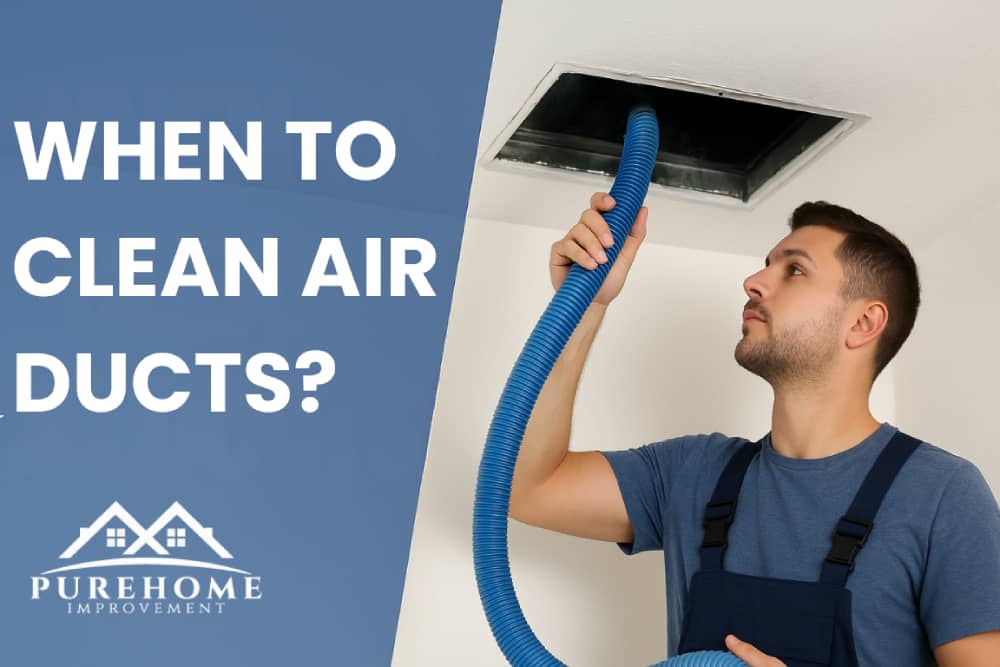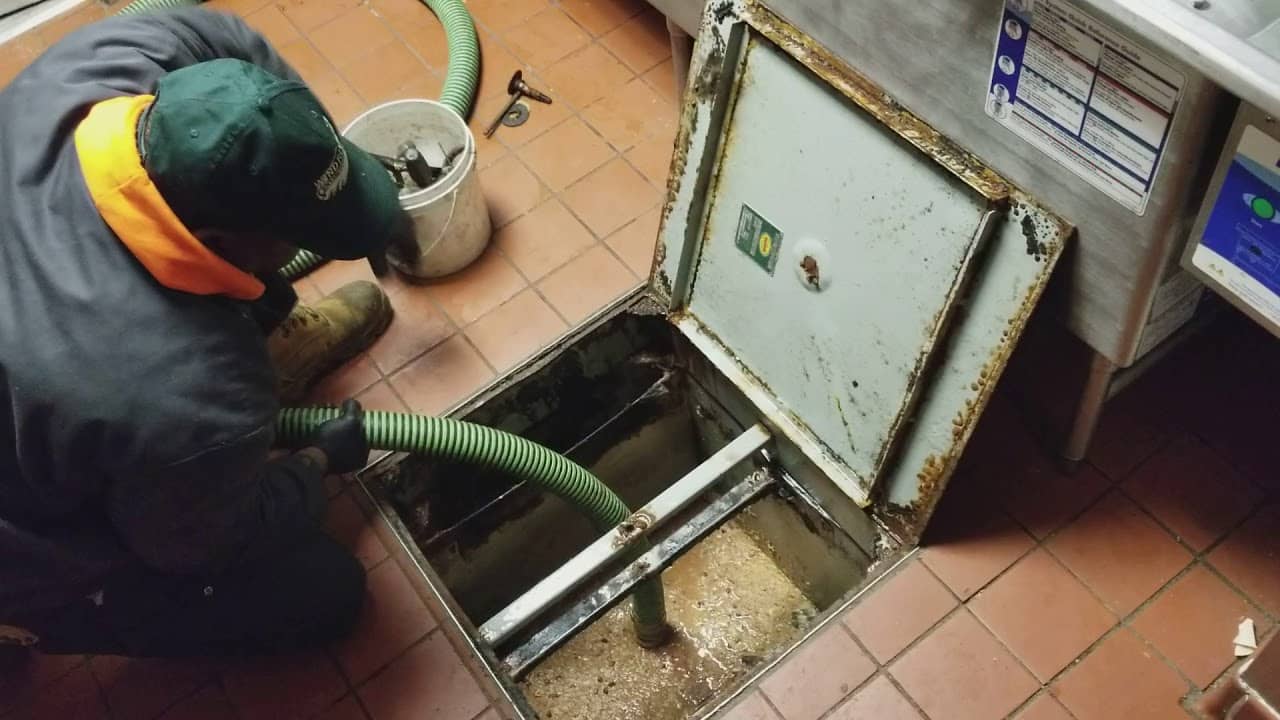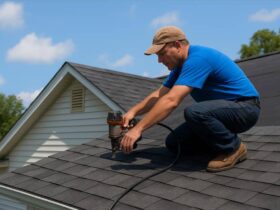Regular HVAC maintenance isn’t just about changing filters or scheduling tune-ups; it’s also about keeping your air ducts clean. Over time, dust and debris can quietly build up inside your ductwork, affecting both air quality and system efficiency. Knowing when to clean your air ducts helps you maintain a healthier, more balanced home environment.
HVAC Duct Cleaning Basics
Air ducts are the circulatory system of your home’s HVAC setup. They distribute heated or cooled air from your furnace or air conditioner into every room, keeping temperatures balanced and comfortable. Their role goes beyond airflow; ducts also affect how efficiently your system runs and how evenly your home maintains temperature. Poorly sealed or dirty ducts can make your equipment work harder, leading to higher energy bills and uneven comfort. Think of ducts as the “delivery routes” for your home’s climate. When they’re clear and well-maintained, your system delivers comfort efficiently.
Most people think of ducts as hollow tubes pushing air, but they actually shape how “alive” your HVAC system feels. They regulate air pressure, noise level, and even how fast your thermostat reacts. When ducts are balanced, sealed, and clean, air moves like it should, quiet, even, and responsive. That’s when your HVAC stops feeling like a machine and starts feeling like part of the home’s ecosystem. Professional HVAC duct cleaning helps maintain that smooth, balanced operation.
Why Air Duct Cleaning Matters
Clean ducts mean cleaner air and a more efficient HVAC system. Over time, dust, pollen, dander, and even construction debris collect inside ducts. When your HVAC system turns on, these particles can recirculate through your home up to 5-7 times a day, triggering allergies and respiratory issues. From an efficiency standpoint, buildup acts like cholesterol in arteries; it restricts airflow and forces your system to push harder, using more energy to do the same job. That’s why regular air duct cleaning plays such an important role in long-term system performance.
Air ducts are where invisible decisions about your air happen. A thin layer of dust may not seem like much, but every bend and vent multiplies that surface area. Over time, that dust acts like a filter, one that never gets replaced. It traps moisture, pollen, and odors, and every time the system cycles, it releases a faint “echo” of that buildup back into your air. Clean ducts help your system “breathe” easier, extending its lifespan while improving comfort and air purity. If it’s been years since your last duct cleaning, your HVAC might already be working harder than it should.
How Often to Schedule Duct Cleaning
The National Air Duct Cleaners Association (NADCA) recommends duct cleaning every 3-5 years, but that’s an average; the right schedule depends on your household. Homes with pets, smokers, allergy sufferers, or recent renovations may need HVAC duct cleaning closer to the 2-3-year mark. If your HVAC system runs almost year-round or you live in a dusty area, that timeline shortens further.
The NADCA’s 3-5-year rule is a good baseline, but it depends entirely on how and where you live. If you have pets, heavy foot traffic, or run your system 10 months a year, you’re not on a 5-year clock; you’re on a living environment clock. A more honest guideline: schedule cleaning air duct service when your lifestyle changes, not just when the calendar says so.
Also Read – 11 Tips For Maintaining A Healthy, Allergen-Free Home
Signs You Need Air Duct Cleaning
Watch for these early warning signs: visible dust bursts from vents when the system starts, musty or stale odors that linger even after cleaning, uneven heating or cooling, more frequent dusting around vents and furniture, and unexplained allergy or sinus flare-ups indoors. If you pull off a vent cover and see thick dust, cobwebs, or dark buildup, that’s a clear “yes” for air duct cleaning.
Forget “visible dust”; by the time you see that, your ducts have been dirty for a while. Instead, pay attention to subtle performance clues: your home feels stuffy even with windows open, you need to dust right after running the system, the HVAC fan runs longer before reaching temperature, or your energy bills creep up without a change in usage. These shifts show your system is working against friction inside those ducts, and is likely overdue for duct cleaning.
When Cleaning Air Ducts More Often Helps
Certain situations practically guarantee more airborne debris: home remodeling or construction, new pets or shedding seasons, pest or rodent activity, severe allergies or asthma, and wildfire smoke or heavy outdoor pollution. In short, anytime your indoor environment changes significantly, it’s smart to refresh your ducts with a thorough cleaning air duct service.
But it’s not just the obvious ones like pets or remodeling. New furniture or flooring can release VOCs (volatile organic compounds) that cling to dust inside ducts, extending that “new smell” far too long. High-humidity seasons cause moisture to bind dust to duct walls, turning normal buildup into a sticky layer that traps more pollutants. And local wildfires or nearby construction can send microscopic particulates through return vents even when you don’t notice odors or visible dust. HVAC duct cleaning isn’t just about dirt; it’s about resetting your indoor environment after your air quality takes a hit.
Skipping HVAC Duct Cleaning: The Risks
Neglected ducts quietly work against your HVAC system. Dust and debris restrict airflow, making your unit run longer to achieve the same results, which can increase energy costs by 20% or more. Over time, trapped moisture and organic matter can lead to mold growth, circulating spores throughout your home. Particles also settle on critical components like coils and fans, causing heat buildup, wear, and a shorter system lifespan.
Your HVAC won’t suddenly fail; it’ll just age faster, like running a marathon in a weighted vest. The more subtle consequence is air quality drift: your home slowly loses that crisp, “fresh” feel, replaced by a mild heaviness that no candle or air freshener can mask. That’s duct buildup doing its slow, quiet damage, the very issue regular air duct cleaning prevents.
When Duct Cleaning Isn’t Needed
This is where many homeowners get taken advantage of. If you recently moved into a new home, had HVAC duct cleaning in the past few years, or your vents and filters stay clean with regular maintenance, you may not need it yet. Avoid companies that use fear-based marketing (“your ducts are toxic!”) or too-good-to-be-true prices (like $99 whole-house cleanings), those are usually bait-and-switch offers.
A reputable company should inspect your system first, show you photos or live camera footage of the buildup, and provide a transparent estimate before starting any work. Real pros will even tell you when not to bother. If your filters are changed regularly, your system’s sealed, and your air quality feels stable, you’re better off investing in a tune-up or better filtration instead of cleaning air duct service you don’t need.
Look for NADCA-certified or HVAC-licensed technicians; legit companies want a long-term client, not a one-time upsell.
Choosing an Air Duct Cleaning Company
Here’s a quick checklist for finding the right pros: NADCA certification (to confirm they follow industry standards), transparent pricing with no surprise add-ons, before-and-after photos as proof of work, powerful truck-mounted vacuum systems, and consistent, detailed customer reviews.
A trustworthy cleaner educates you instead of pressuring you. If they’re willing to explain what they’re doing and why, that’s a great sign. Don’t pick the company that promises “clean ducts”; pick the one that promises a cleaner HVAC system. True professionals treat air duct cleaning as part of overall system health; they’ll inspect coils, fans, and filters, not just vents.
Ask two key questions: “What kind of vacuum system do you use?” (the right answer is a truck-mounted negative-pressure unit) and “Do you sanitize the system, and if so, with what?” (you want EPA-approved solutions, not mystery fogs). Good companies perform duct cleaning with transparency and teach you how to keep it that way.
Keeping Air Ducts Clean Longer
Preventing buildup is the best money-saver. Replace HVAC filters every 1-3 months (more often with pets or allergies), vacuum around vents weekly, and keep return vents clear of furniture or curtains. Use pleated filters that capture smaller particles without choking airflow, and consider a high-efficiency air purifier if you live in a dusty or polluted area.
Seal ducts and gaps to prevent unfiltered air leaks, and have your HVAC tech apply mastic during tune-ups to close minor leaks. Schedule seasonal maintenance, and technicians can catch early signs of duct issues before they spread.
Every few months, remove a vent cover and vacuum just inside the duct opening, not deep inside, just enough to stop surface buildup. Let your fan run on “auto,” not constant on, so the air rests when it’s not conditioning. Skip the duct sprays and gimmicks; the cleanest ducts aren’t just cleaned often; they’re part of a system that’s sealed, balanced, and respected. Regular HVAC duct cleaning completes that cycle of care and keeps your indoor air feeling fresh year-round.












